Preparing Your Child to Walk to School in Japan Without You
The Route To And From School
Perhaps the biggest and most immediate change that accompanies your child’s graduation from kindergarten to elementary school in Japan is her newfound independence.
No longer assumed to require around-the-clock supervision, her first step out alone will likely be the walk to school and home again. Although most kids are delighted by this sudden freedom, for most parents, and some children, it will take some time to come to terms with it.
When most soon-to-be first-year elementary school kids imagine walking to school by themselves they probably picture the sun shining, birds singing, friendly neighbors waving to them and many new friends and happy experiences along the way. Cautious children, however, may share the image that most parents see: a cold and cloudy day with speeding cars just around the corner and adults with dark thoughts lurking in wait. The real picture will usually be closer to the first image, but it’s the eternal possibility of an exception to the norm that makes parents worry. So what are parents to do? First, understand that it is rare for a child to meet with foul play on the way to and from school—millions of children commute safely every school day. Second, do what you can to prevent your child from meeting with danger. Let’s look at how to do that.
Practice makes confidence
Before the new school year starts in early April, walk the route to and from school with your child. As you do so, advise your child on how to safely cross roads and intersections and to navigate footpaths that may be heavily used by bicycles. If possible, walk the route together at the time that your child will walk it—in order to arrive at school by 8:15 a.m.—and ideally do it on a school day. That way both of you will get an idea of how much road and people traffic there is then and also whether there will be other students walking nearby or not. As you walk, take note of stores and other public buildings that your child could flee to in case of an emergency, checking too whether they would be open around 8 a.m. Some of these places will include shops and homes marked with the “kodomo 110-ban” (kodomo hyaku-tou-ban) sign. Children who seek refuge at such premises will be protected there until police arrive. Also, teaching your child to say hello to local shopkeepers and residents that she passes daily near your home and on the way to school will help train their eyes to look out for her, as well as help her to feel like part of her local community.

In the first few days of school you might want to walk to school with your child, even if you don’t go the whole way. That should give you a realistic picture of how many dangers really await her on the route. This also gives you a chance to spot other parents who may live nearby and share the same concerns as you about their children walking to school alone. Strike up a conversation and see if you can direct it towards organizing a walk-to-school partner.
Families supporting families
As schools these days are required to protect students’ personal information, they may be unable to help you if you ask them to put you in contact with other parents living nearby. Get talking to parents at your child’s kindergarten or at the park to track down a walk-to-school friend. Be aware that such enforced friendships may turn sour if pushed too far past their natural limit, so start such an agreement with the understanding that it is to last only as long as the children feel comfortable with it. That period will probably be long enough to ease you all into the elementary school routine, anyway. If you do organize a walk-to-school friend, or friends, be mindful of the meeting place that you select. It would be safer to meet at someone’s home rather than out on the street.
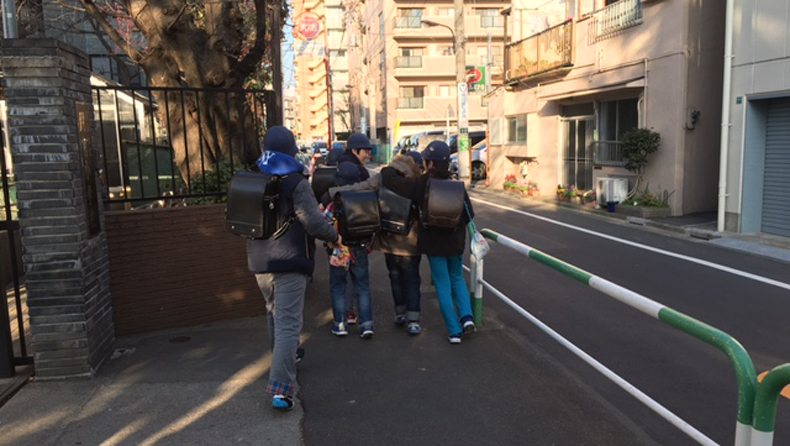
Most schools have attendants that stand at intersections near the school and use their flags to help the students cross the roads safely. Some schools have the rule of not returning home—to pick up a forgotten item, for example—once the child has left for school. Indeed, a child walking away from school in the morning seems a likely target for scary strangers. As a fragile first-grader, your child will loath arriving at school without a required object, but most teachers are understanding, especially in the lower grades. If you notice something has been forgotten, you can take it to your child’s classroom for her.
Same route, straight home
Police say the most dangerous time for elementary school students is immediately after school ends. This is why schools tell students to always go straight home and put away their school bags and school hats before going out to play. A shortcut through the park on the way home, with one’s school bag and hat on, would be another welcome sign to a dark-minded stranger. Schools also advise kids to always take the same route to and from school. This rule can help you find your child if you go looking for her when she’s been particularly slow getting home. Keep in mind that distractions along the way are sometimes more plentiful than others—such as when there is snow on the ground or on particularly wonderful weather days—and they will slow your child’s walk home.
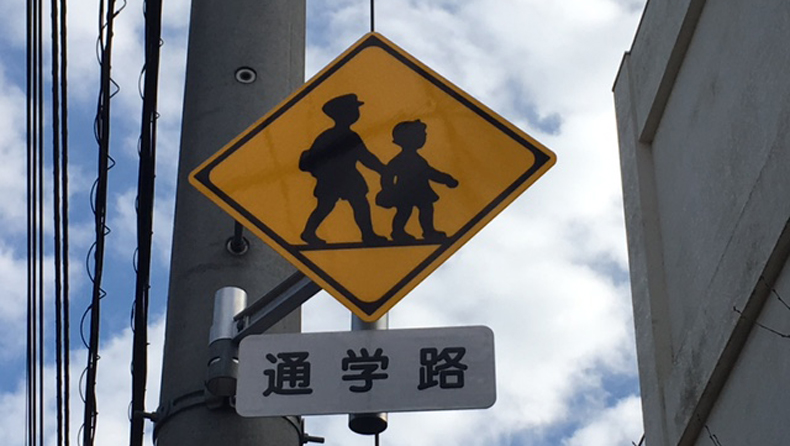
In the first few weeks of elementary school, many parents of first-grade students meet their children somewhere along the route home, but usually not at the school gate—remember your child’s pride in not being a kindergartener anymore. For most of April, first-grade students will finish classes before the rest of the school gets out around 2:30 p.m. or later. Even within the same grade, different classes leave at slightly different times, depending on whether the teacher can wrap things up promptly or not. If your child has promised to walk home with a friend she may have to wait for that person. The entrance to the school building, where the students change into and out of their indoor shoes is usually a great meeting spot. She can also check if a friend is still at school or not by looking to see whether his indoor shoes are currently in use.
Trust is imperative
The daily number of classes increases as students go up a grade: a five-lesson day that finishes around 2:30 p.m. will turn into a six-lesson day ending around 3:20 p.m. This makes it difficult for first-graders to partner with older students or siblings for the walk home from school.
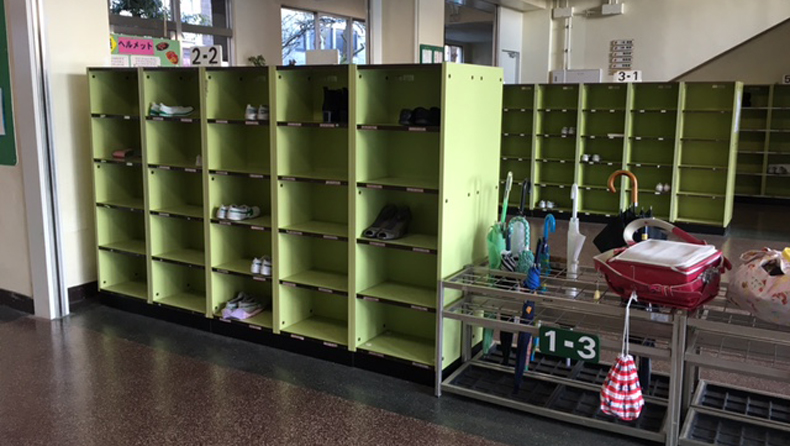
Some public elementary schools have trialed an electronic “touch in, touch out” school arrival and departure system that automatically emails parents when the child touches in or out. However, the kids, being kids, sometimes forget to touch the electronic panel. This is the Achilles heel of equipping children with devices that will let you know where they are—many such devices are helpful only if they are used properly. According to your family’s circumstances, such a device may be appropriate, but long-term it is probably better to instill responsibility and common sense in your child by together creating and upholding baseline agreements about walking to and from school alone or going off to play with friends alone. Trust is imperative for a healthy parent-child relationship, and monitoring devices have the potential to undermine that trust.
Communication is key
The schools provide good guidelines for afterschool play, such as never playing outdoors alone and always notifying a guardian about where, when and with whom one is going to play, and what time one will return home. Kids with mobile phones instead often use them to call home to ask if they can stay and play longer with their friends.
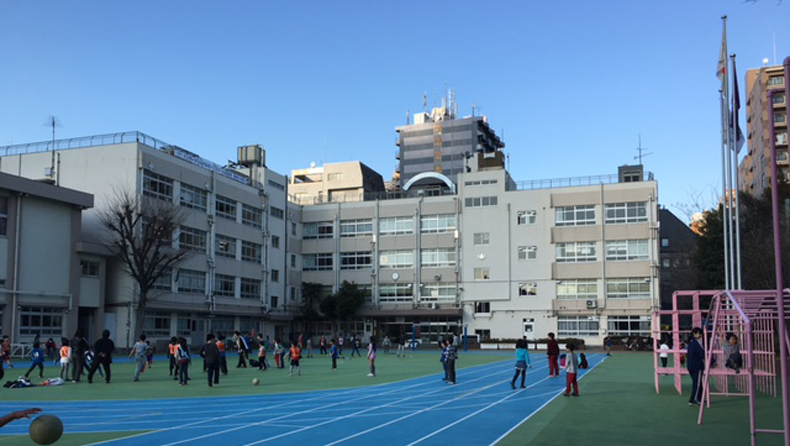
If your child will be attending a public elementary school in Tokyo, it will probably be not far from your home, with the walk to school likely taking less than 20 minutes. A security device is unlikely to be necessary in such a case. If your child will be traveling far, though, to a private school perhaps, then you may desire the reassurance that a security device can provide. Although it may involve a bus or train ride to school instead of a walk, also try the steps mentioned above about traveling that route with your child and seeking out a commuting partner.
Take advantage of technology
Probably the most popular security device for elementary school students is a kids-use mobile phone. The main mobile phone companies each have a version of these. One of their key features is that phone numbers from which the device will accept calls, or to which it can make calls, have to be pre-registered. Since only a handful of phone numbers can be registered, the phone’s usage is confined to the child and her family or other key people. Kids’ mobile phones typically include a simple messaging function and they can usually also be equipped with a global positioning system that will allow you to look up your child’s location anytime. Since they enable a parent and child to talk or message each other, phones provide a convenient flexibility of use. These junior version phones usually do not include functions such as a camera, website connection, games or additional applications, which limits many of the negatives associated with mobile phones for children. A more recent, midway version of cellphones aimed at the elementary and junior high school market includes those functions, opening the path to bullying via messaging and access to costly or age-inappropriate websites and messaging.

All schools tell students not to bring to school anything unrelated to their studies, but some schools flat-out forbid mobile phones. In that case, you may like to use a GPS locator device. Parents can check the location of the device via their computer or smartphone. Many versions, like the Dokoiruka brand, include an emergency buzzer. GPS devices offered by security firms such as Secom include a service under which if the emergency button is pressed, the company will contact the parents to ask if they want security staff sent to the child. The staff can even help bring your child home. Some kids have accidentally pressed that button so many times that their parents consider it a cry wolf, which rather undermines the purpose of the service, but a device does offer some peace of mind and an avenue of action when you are seized by the question, “where is my child?”
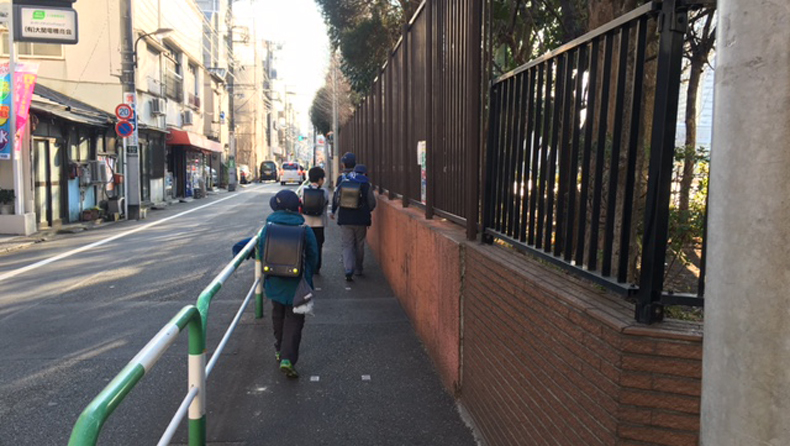
Tardy children and the risk of them being spirited away are phenomena that predate the internet. How did our parents look out for us? With good, old-fashioned rules and common sense and phone calls to our friends’ parents and by chatting with neighbors. Ideally, as parents we look out not just for our own kids, but for all kids—even the grown ones. And we teach our children to do the same.












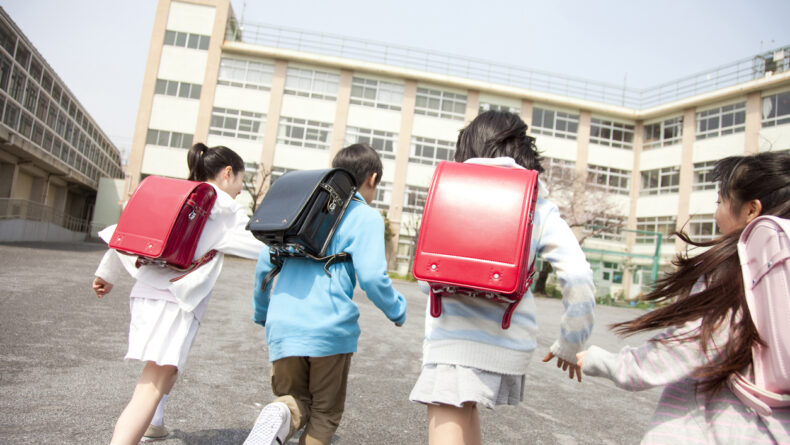
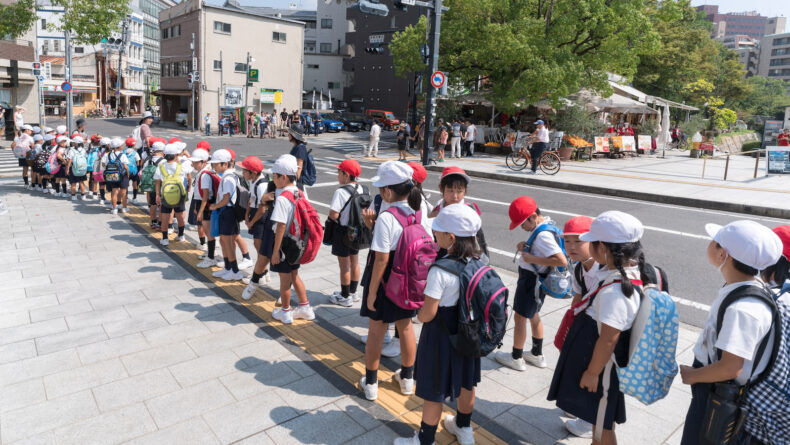

Leave a Reply